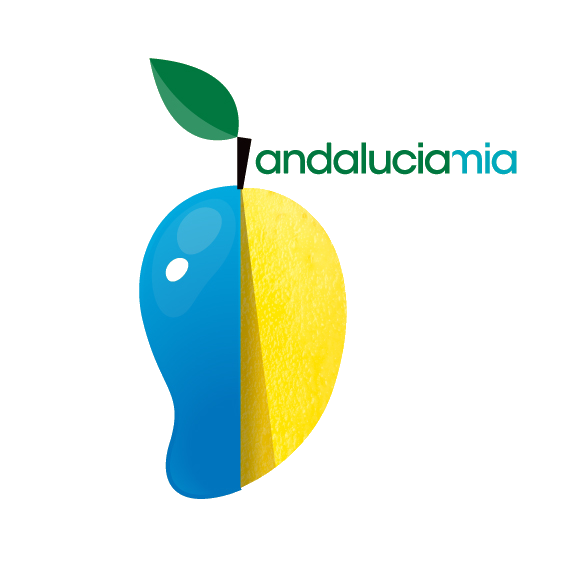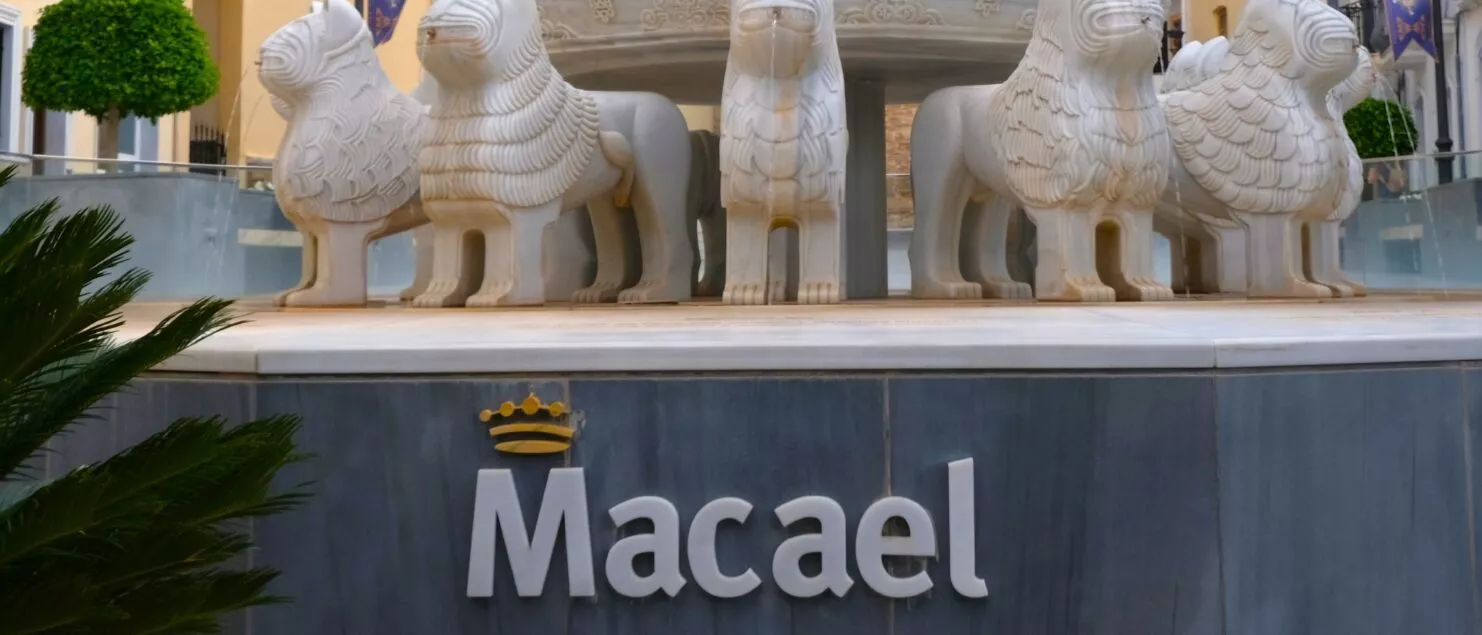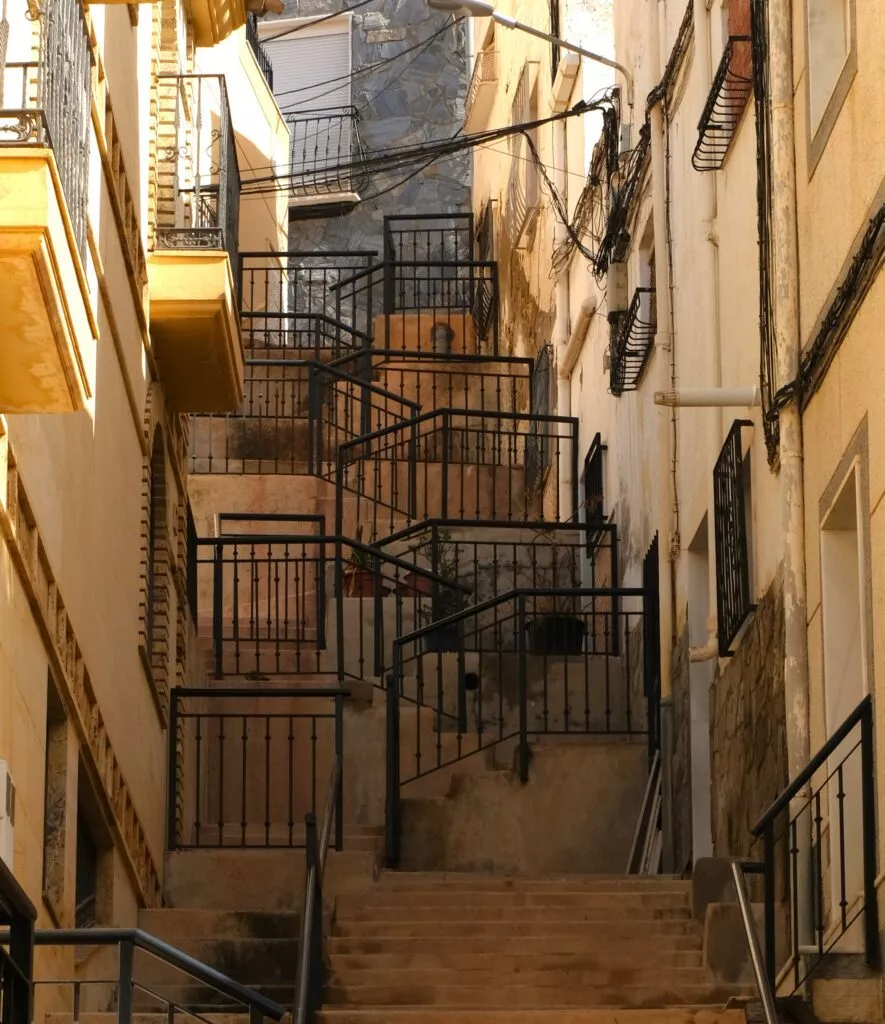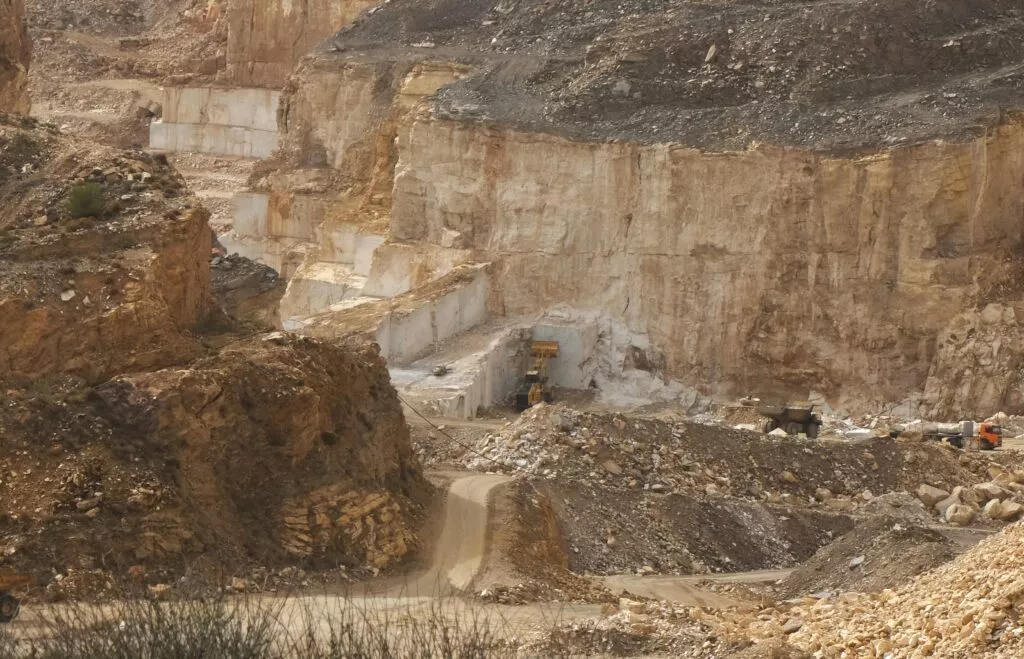What to see in Macael in Andalucia, the capital of white gold
Visit Macael, 13 places to see in the town of white marble
In this article you’ll find all the information you need about what to see in Macael, the city of white marble in Andalucia:
- A few words about Macael
- Where is Macael in Andalucia?
- The origins of white marble in Macael
- What to see in Macael
- The main annual festivities in Macael
- Book accommodation in Macael
- What to see and do around Macael
- Where to eat in Macael
- Some useful links
- The latest articles on authentic Andalucia
A few words about Macael
Macael, in the province of Almeria, is a surprising town. It is known as the capital of white gold. In fact, just 3 km away there is an incredible deposit from which the ‘Mármol Blanco de Macael’ is extracted.
The marble quarries have been known since ancient times. However, the first population centre in Macael was built during Muslim rule, around the 10th century.
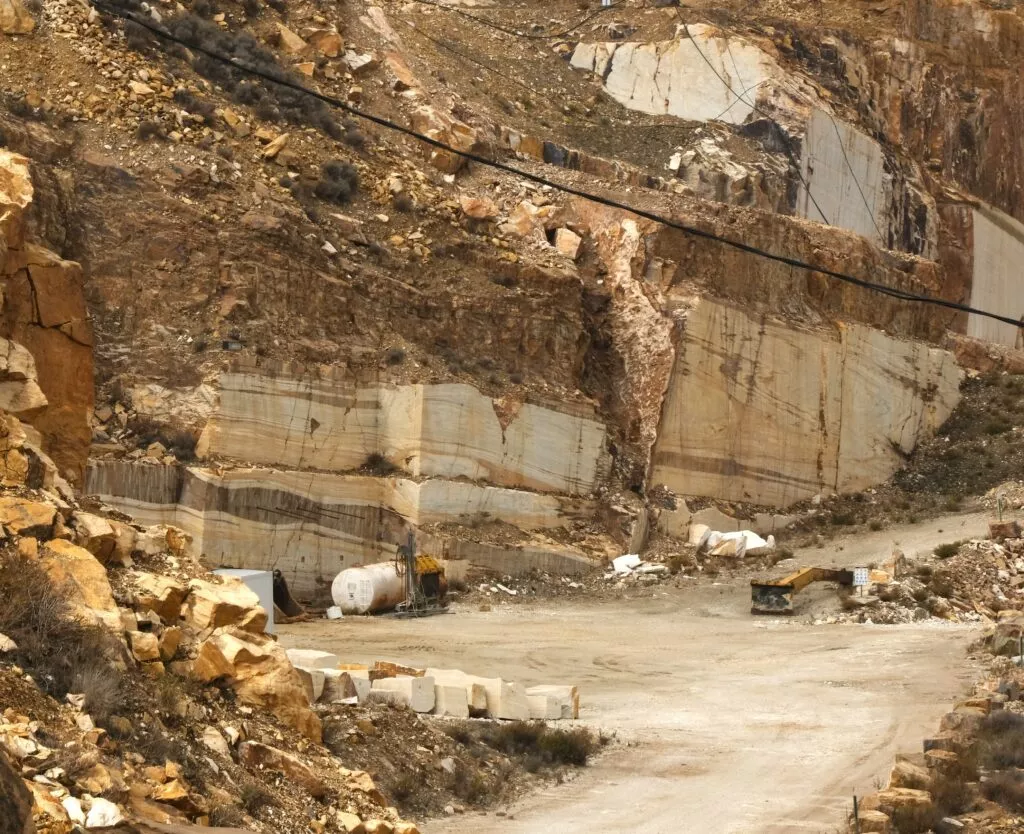
The origin of the name Macael is still uncertain. There are currently 3 hypotheses. In its 15th century form – Machael – we can assume a Hebrew origin, close to the Hebrew word machah. And also because not far from there there is a locality called Pago de Ysrrael. The second hypothesis is that the name comes from the Catalan word macc, meaning stone.
Lastly, the most likely hypothesis is the Arabic origin of the name, probably linked to the names of funerary stelae or marble tombs.
Macael, a land of cinema
Macael appeared a few years ago in a major Hollywood production: Ridley Scott’s Exodus. Several scenes from the film were shot in Macael’s marble quarries.
Where is Macael in Andalucia?
The origins of white marble in Macael
During the 10th and 11th centuries, the use of white marble in Macael developed considerably.
In 936, on the orders of the Caliph Abderramán III, quarrying began to supply marble to the palace city of Medina Azahara in Córdoba.
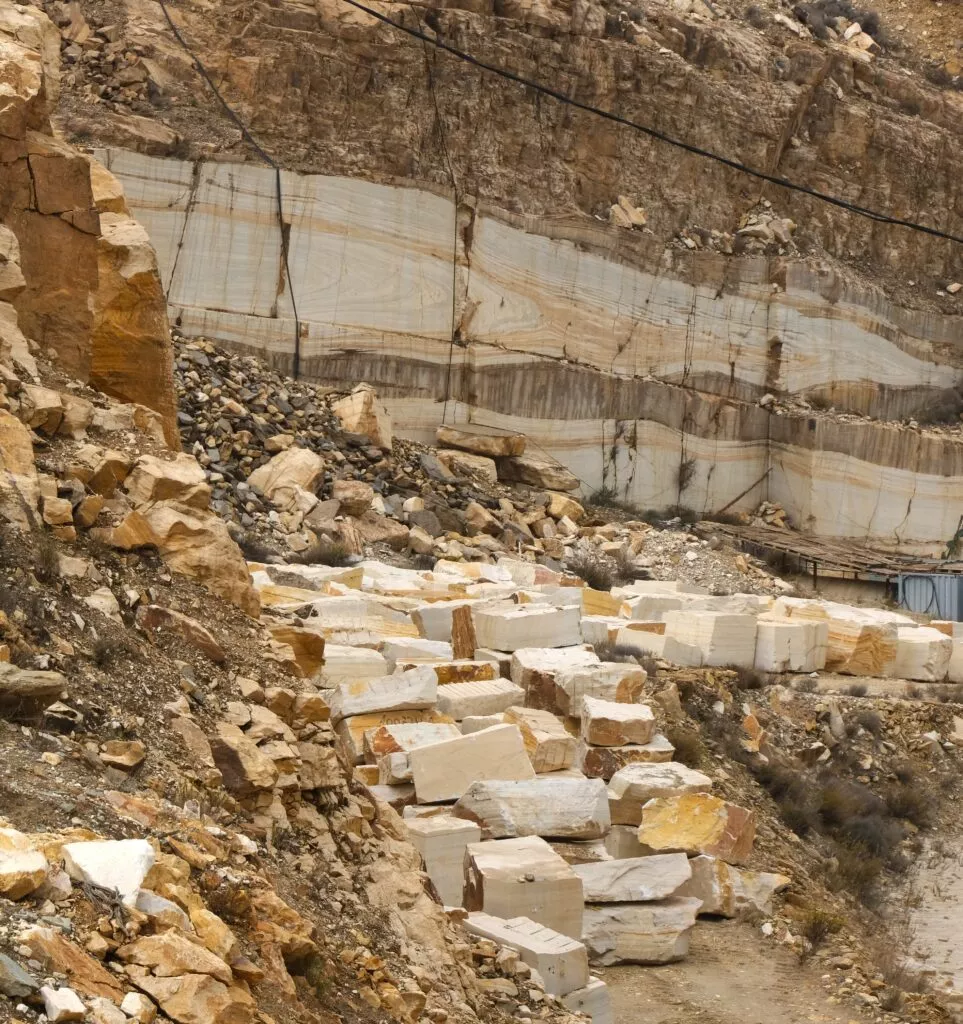
In the 11th century, the marble was used to build monuments and produce funerary stelae (some of which were exported as far as Nigeria!). Another curiosity is that some of these 11th-century stelae can be seen in a museum in Montpellier, France. The polished white marble of Macael was highly prized in al-Andalus and was known as ‘al-mulaki’, the royal marble.
On the trail of white Macael marble around the world, since the time of the Phoenicians:
It’s simply impressive, and the list is not exhaustive :
- Anthropoid tombs in Cadiz,
- Roman theatre in Mérida,
- Palace of Medina Azahara,
- Alcazaba in Almería,
- the Patio de los Leones at the Alhambra in Granada,
- the gardens of Generalife,
- Cordoba Mosque,
- the Escorial monastery,
- the Royal Palace,
- Jaén Cathedral,
- the Royal Chapel of Granada
And a little further afield outside Spain :
- Kremlin Palace, Moscow
- Kansas City Central Library,
- Aker offices in Oslo
- Hotel Crown Plaza in Indonesia,
- Rally Museum in Israel,
- Hotel Burj Al Arab in Dubai,
- Hotel Silver City in China,
- The Alhambra building in Miami,
- ….
And finally, there’s a major project in progress: Macael’s company, Mármoles Camar, has been working for over five years on the Sagrada Familia towers in Barcelona.
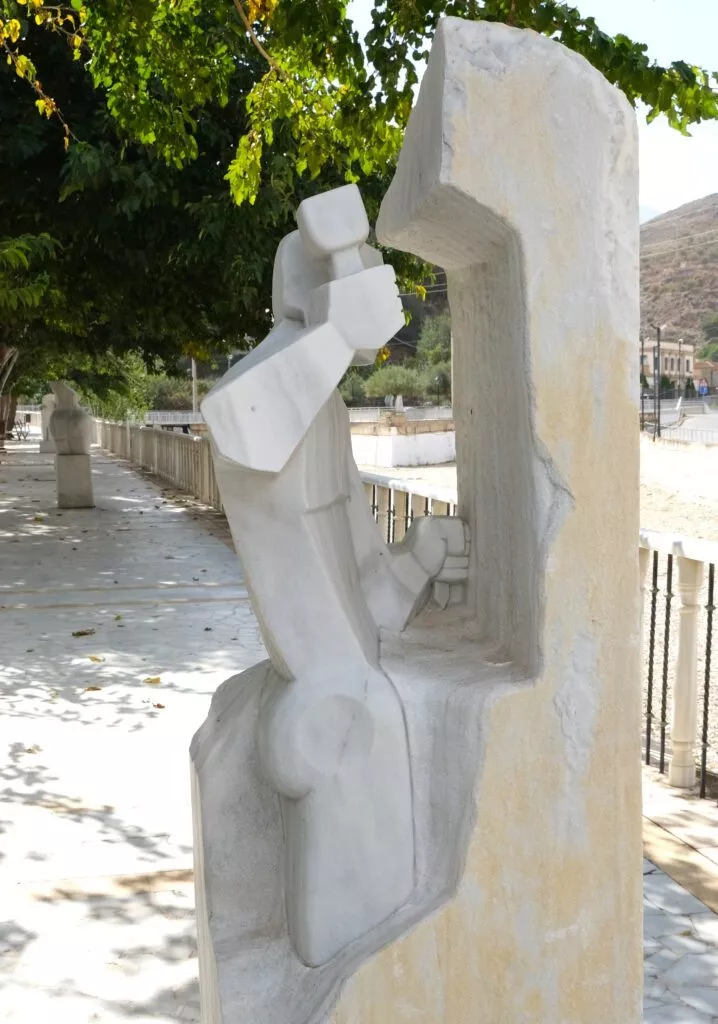
What to see in Macael
1 – The pavements of Macael
2 – The Plaza de Almeria
3 – The largest mortar in the world
4 – The Plaza de la Constitución
5 – The replica of the Fountain of the Lions in the Alhambra
6 – Nuestra Señora del Rosario parish church
7 – Macael marble quarries
8 – Viewpoint of Consentino
9 – Viewpoint of Las Canteras
10 – Paseo Reino de Granada
11 – Marble Interpretation Centre
12 – Monument to the stonemason – Monumento al cantero –
13 – The Virgen del Rosario viewpoint
Here’s a video to take you on a brief tour of the town and its marble quarries, before exploring all the places of interest in Macael in detail:
1 – The pavements of Macael
This day in Macael was a most surprising one. After discovering the gigantic quarries (see below), I arrived in the centre of Macael. And the first thing that surprised me was…. the pavements in the town centre.
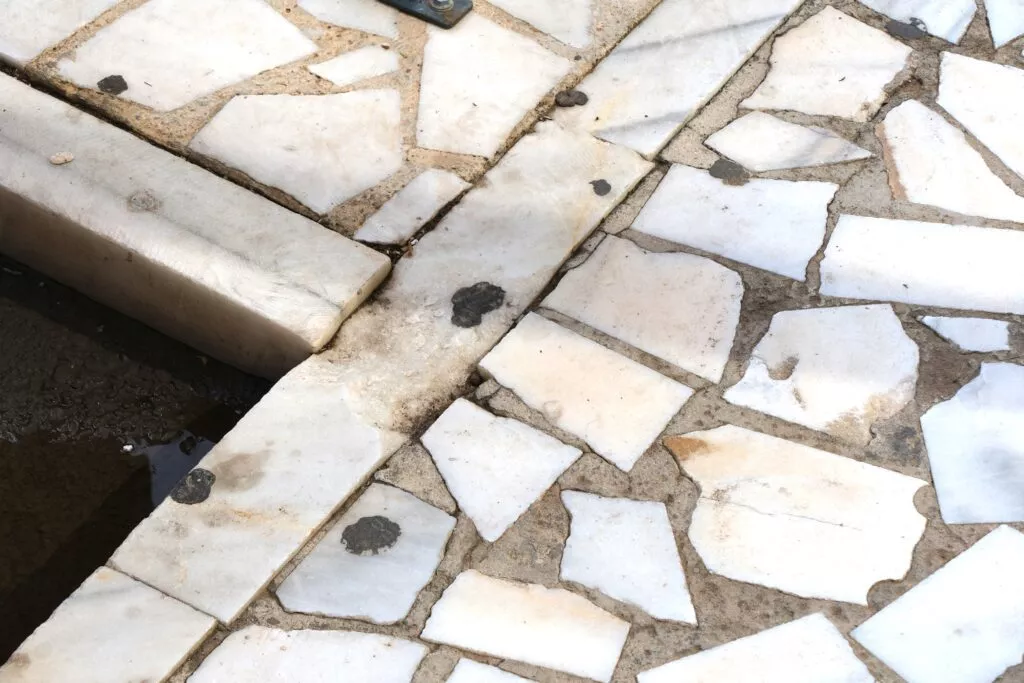
Almost all of them are made of marble, with blocks of marble as kerbstones!
2 – La Plaza de Almeria
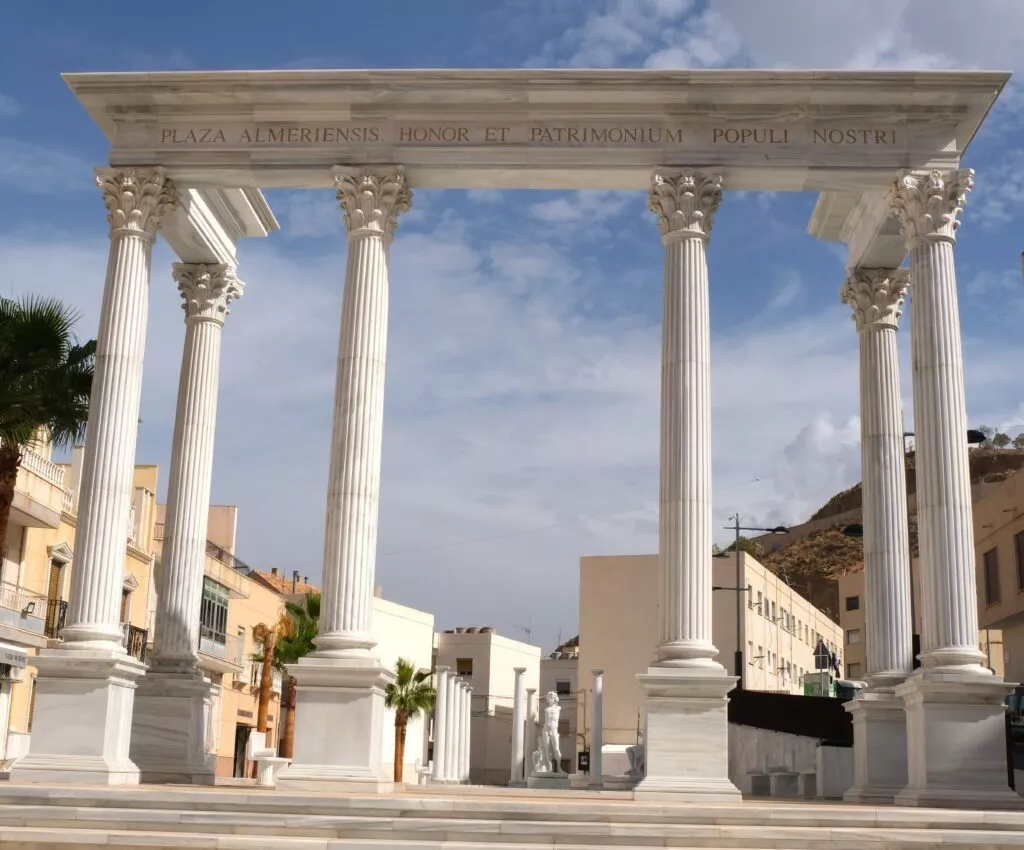
This Plaza de Almeria in Macael announces ‘the colour’ of what the visit to the city will be like 🙂
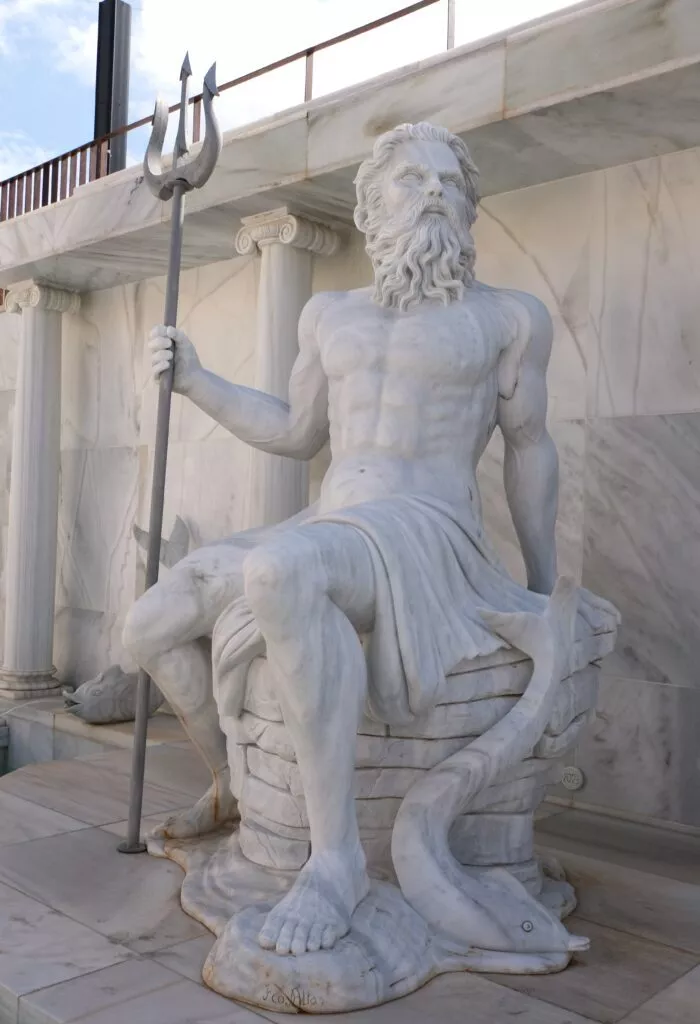
It pays tribute to Macael’s Roman past.
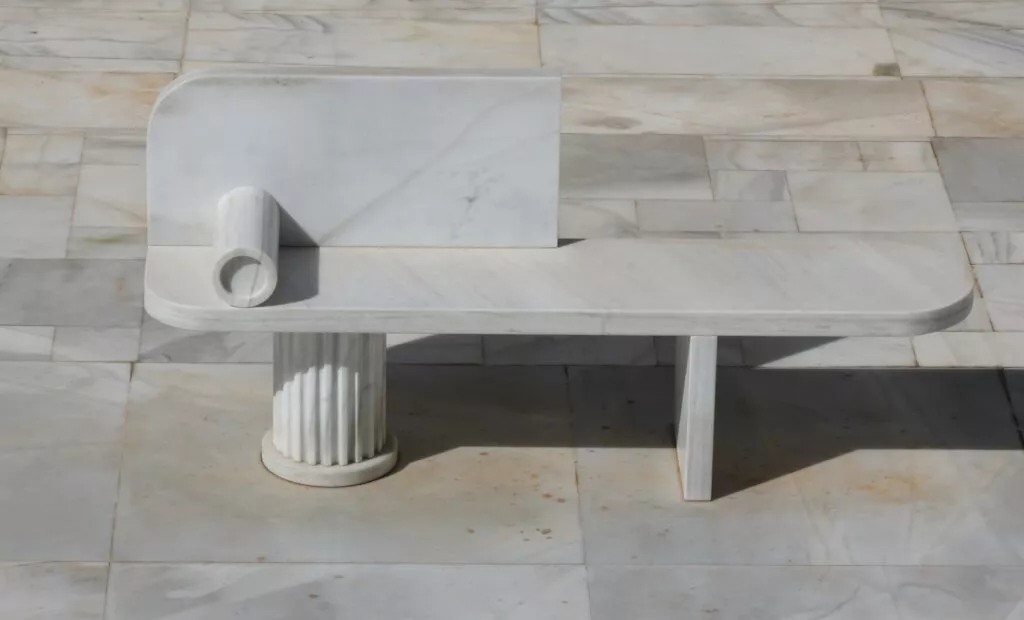
The world’s largest mortar
This piece of marble is monumental, weighing in at 50,000 kilos and standing on a slab of white marble between Avenida Andalucía and Avenida de Ronda. This piece perfectly imitates a classic marble mortar. Given the weight of the marble, it’s also probably the most expensive mortar in the world 🙂 .
Further down the article, you’ll discover another all-marble monument that weighs 5 times as much as this one. A monument weighing 250 tonnes of marble…
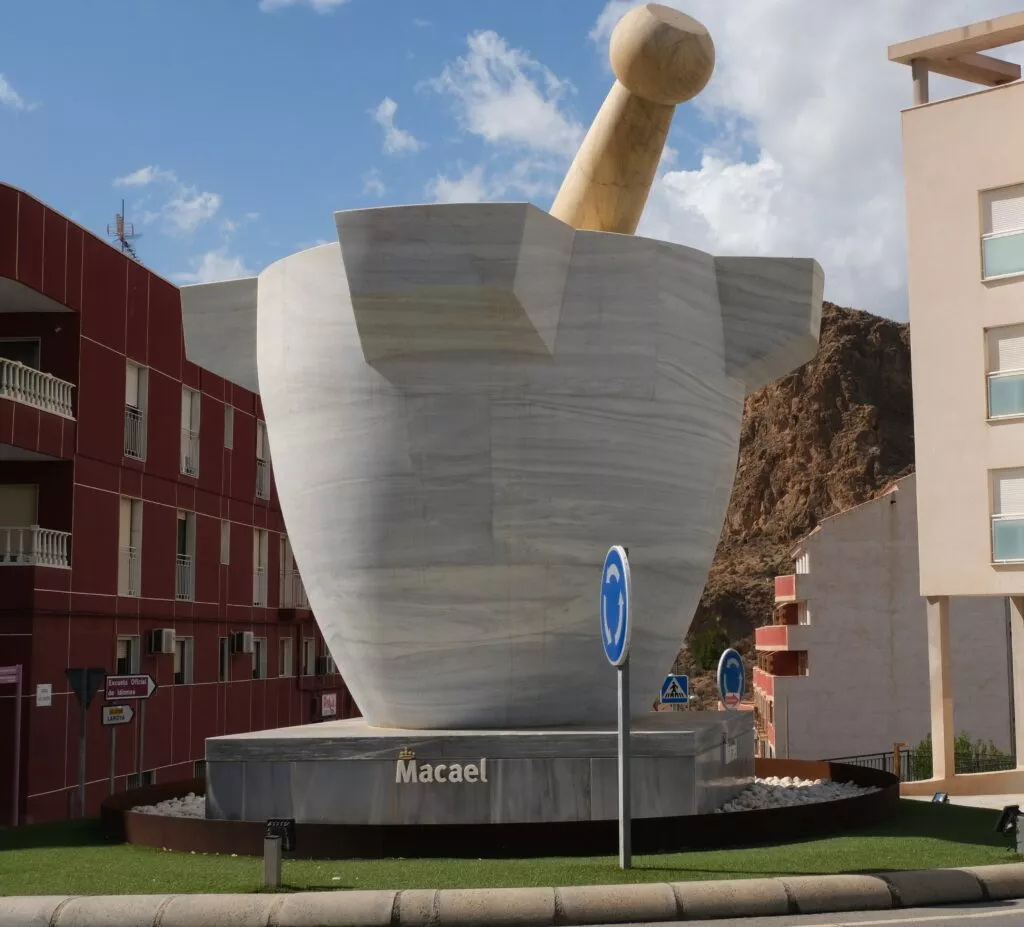
Cosentino Group and Pimar Stone were involved in its construction, supplying the material used to make it. Arriaga Artesanos del Mármol also sculpted the work.
However if you want to buy a mortar in a shop, you can find some in a smaller size 🙂
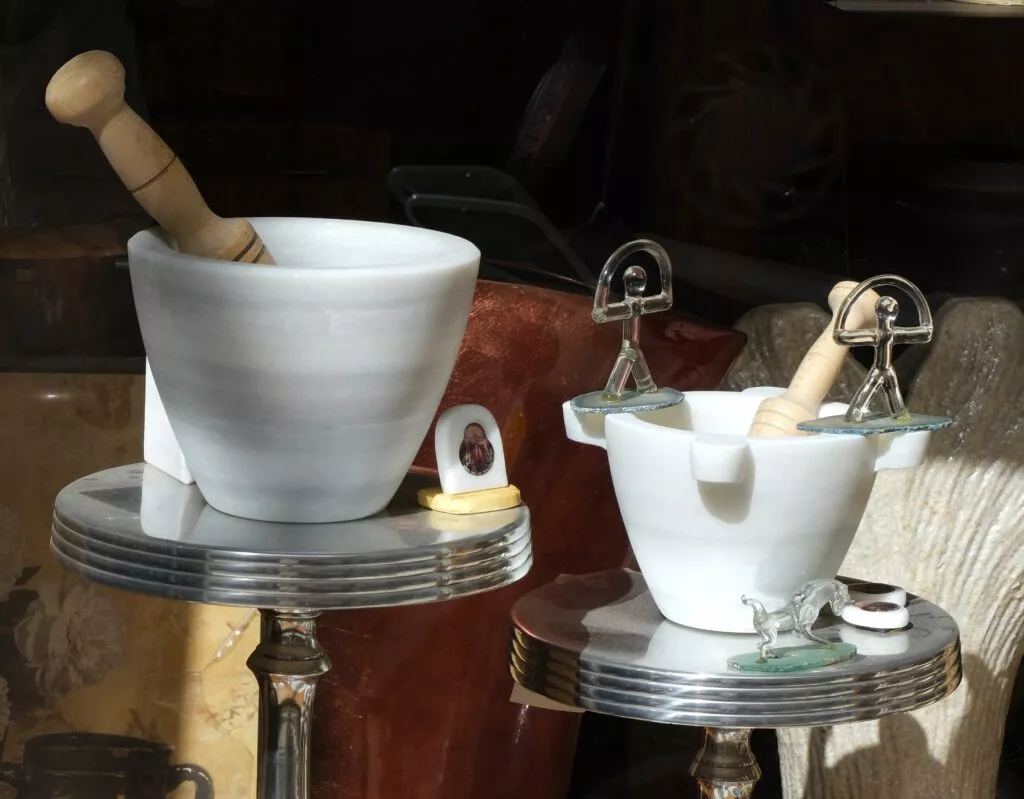
Constitution Square
This is the most remarkable square in the town of Macael. It is located in the centre of the town. The square features a number of stately homes dating back to the turn of the century, as well as the old town hall with its coat of arms on the main façade.
Since 13 June 2015, the square has been home to an exact replica of the Fountain of the Lions in Granada’s Alhambra, sculpted in white marble by local artisans. Just around the corner from the square is the parish church of Nuestra Señora del Rosario.
The replica of the Fountain of the Lions in the Alhambra
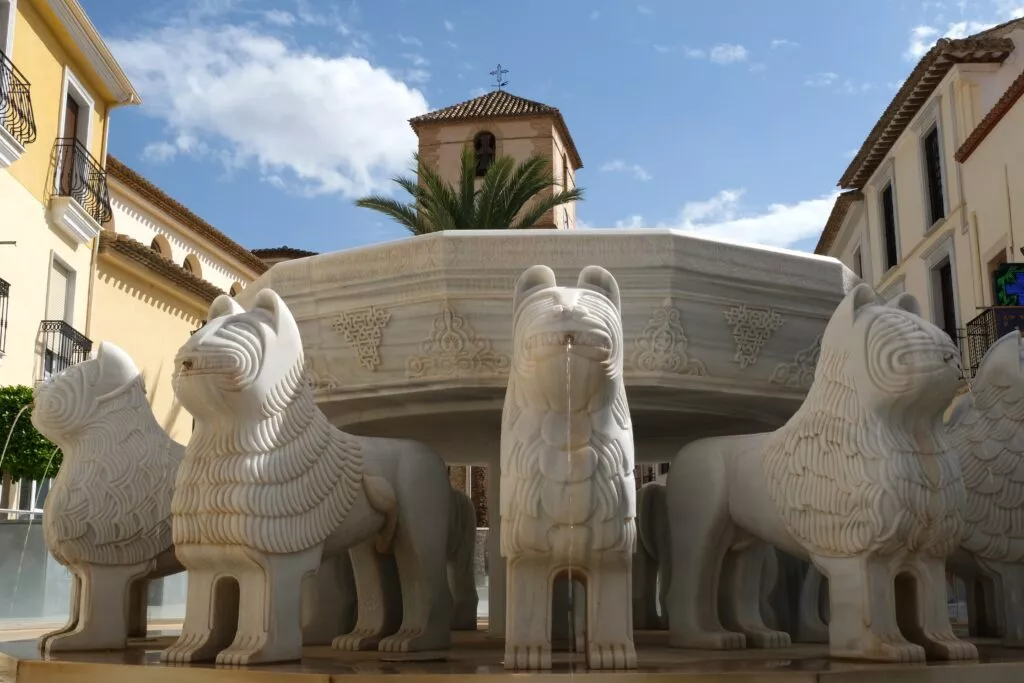
This is a ‘unique’ piece of beauty, with marble plaques on which you can read the Spanish translation of the 12 verses by the poet Ibn Zamrak, describing the fountain itself.
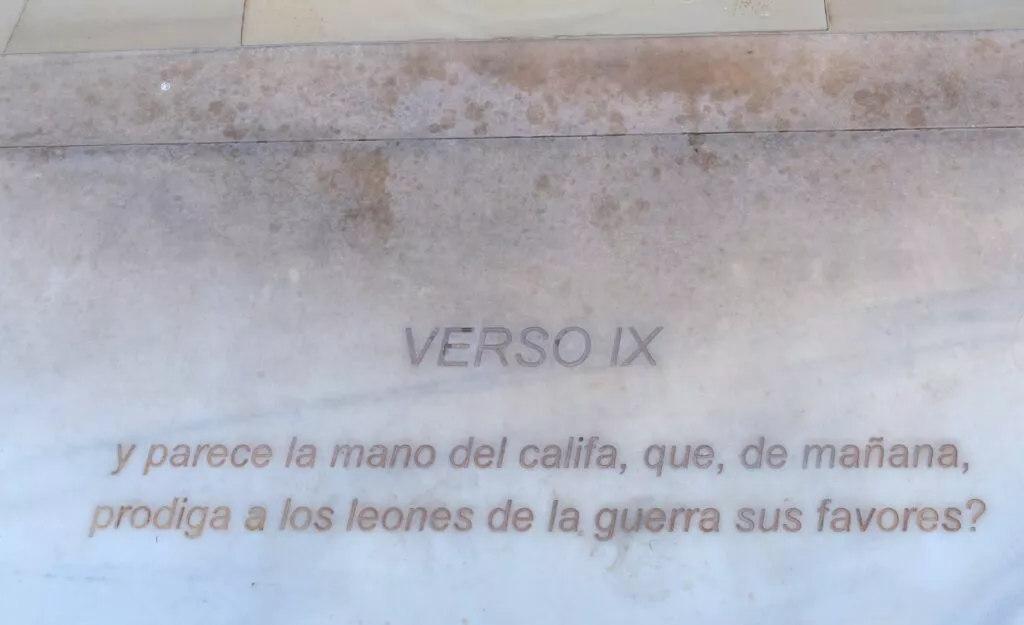
It is an identical reproduction, in homage to the lion fountain in the Alhambra, made from Macael marble in Al-Andalus.
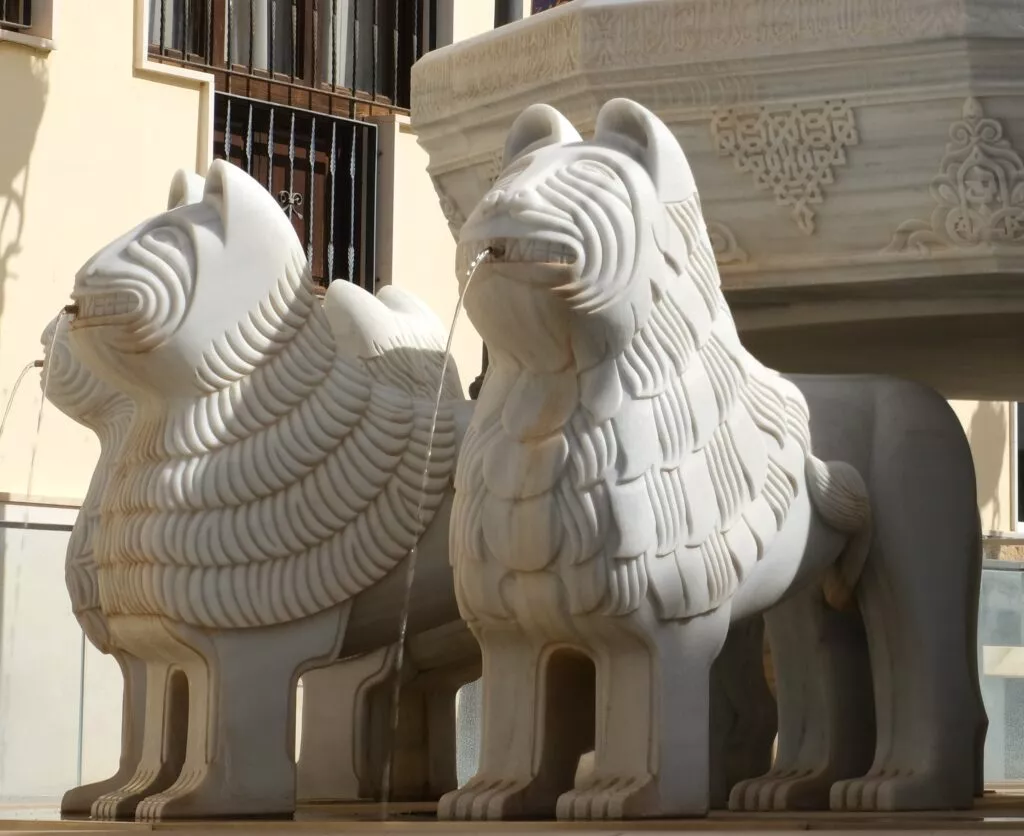
Nuestra Señora del Rosario parish church
This is a photo of the church taken from the lion fountain:
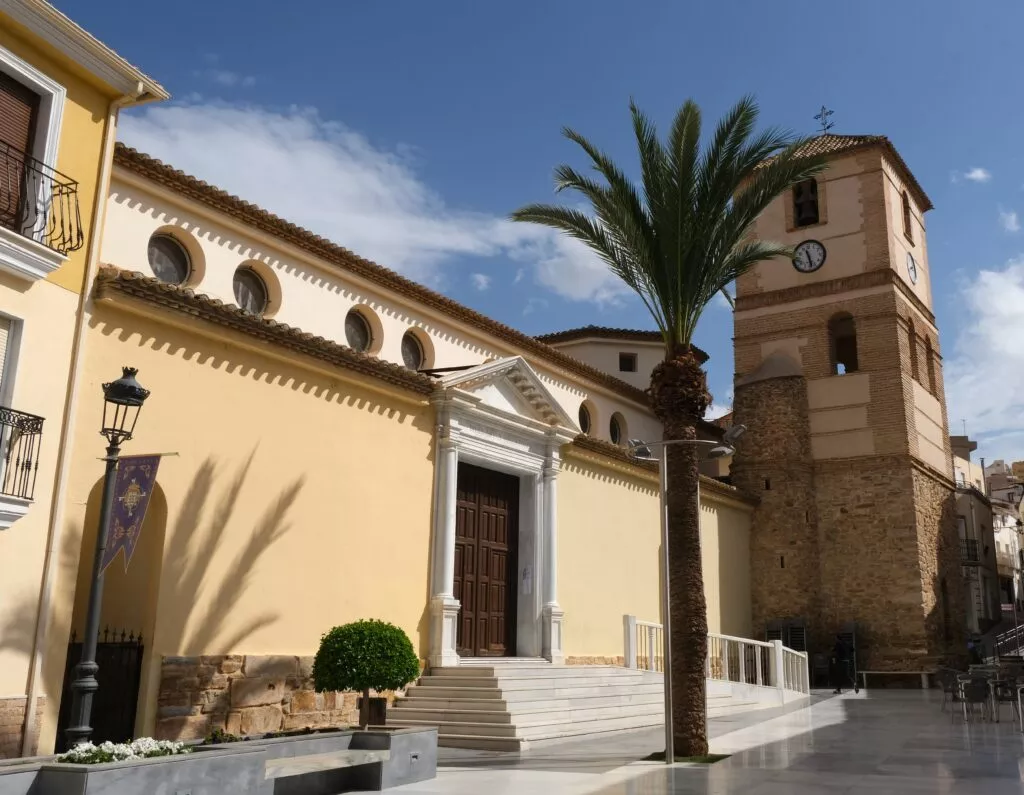
A colourful break in Macael
Of course, best things to see in Macael are always white. So here are 4 colour photos taken right in the centre of this little town, to give your eyes a break from all that white 🙂 .
These photos were taken on Calle Gacia Lorca.
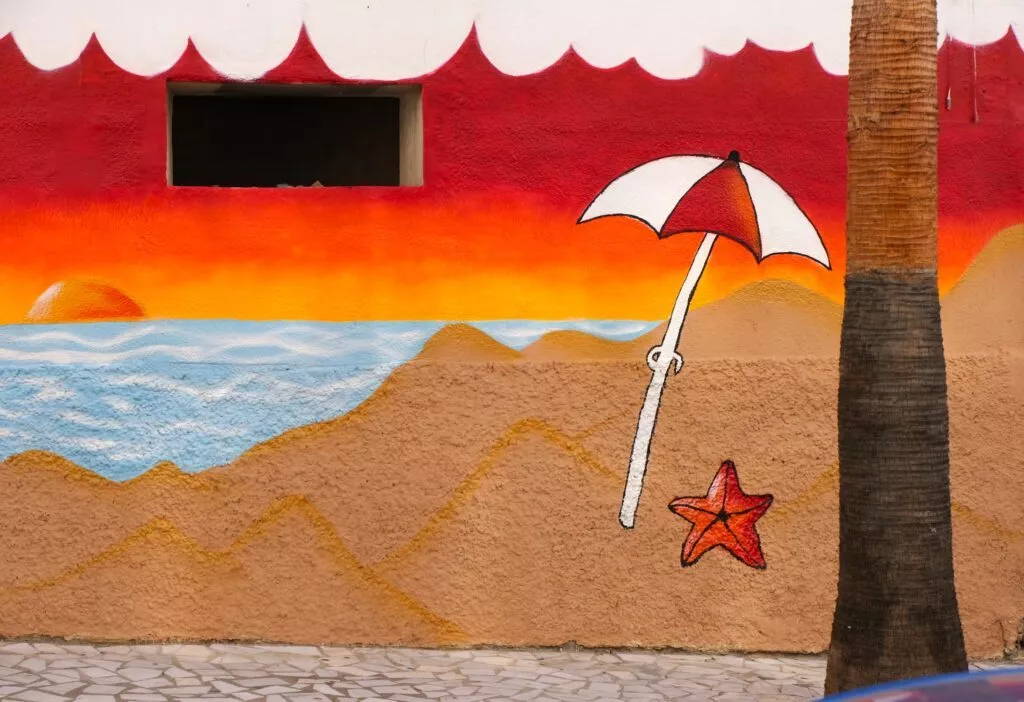
And here is a beautiful staircase :
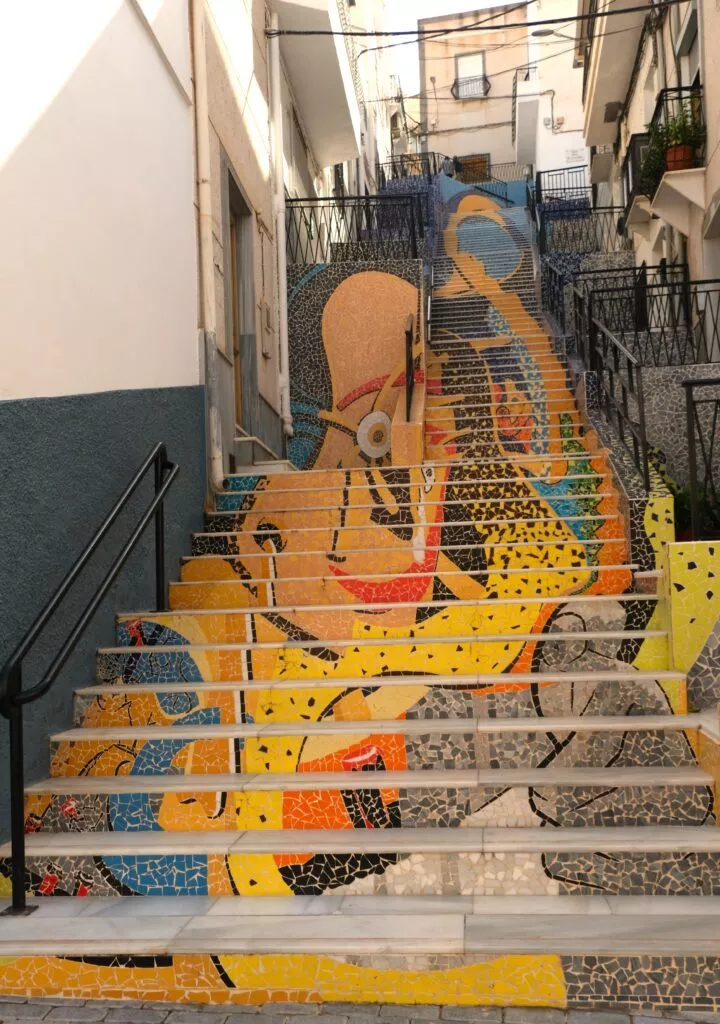
This staircase…is easier to take a photo of than to walk on… 🙂 . It was made by a local sculptor – Eduardo Cruz Rubio – :
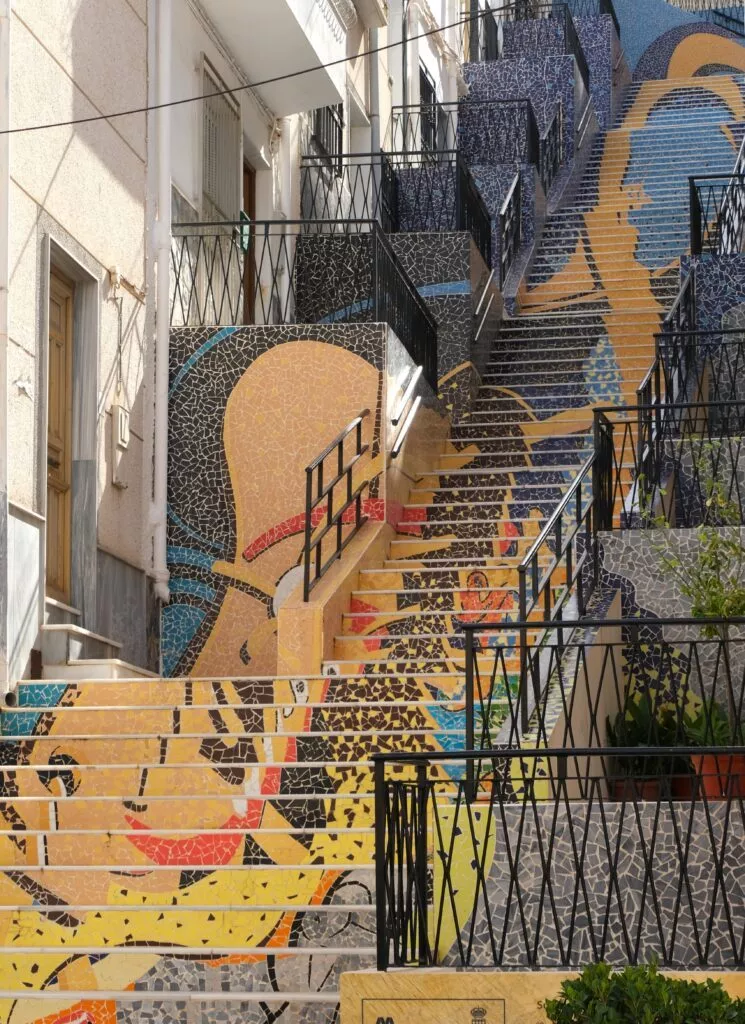
The marble quarries of Macael – a must-see!
Some figures on the importance of marble at Macael
These figures are quite simply impressive and give a good idea of the size of the site.
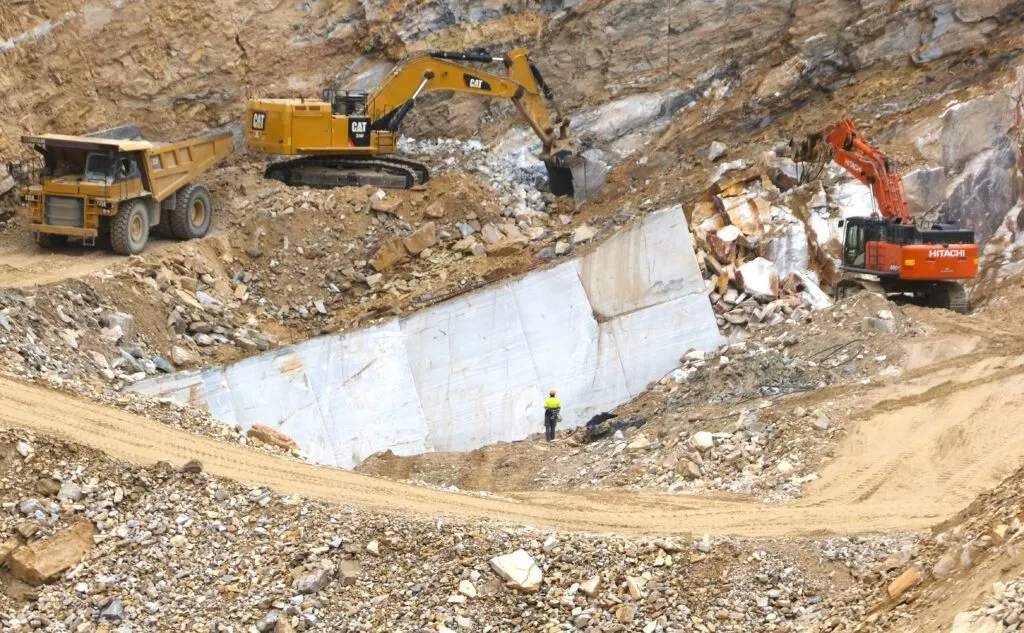
- 300 companies specialising in marble extraction and processing
- Surface area: 6,700 hectares
- Number of quarries: 145 (80 in operation)
- Number of workers (including extraction): 4,800, including 980 in the craft sector
- Estimated reserves – Marble + Dolomites (yellow marble) – and others): 40 million cubic metres.
Cosentino viewpoint
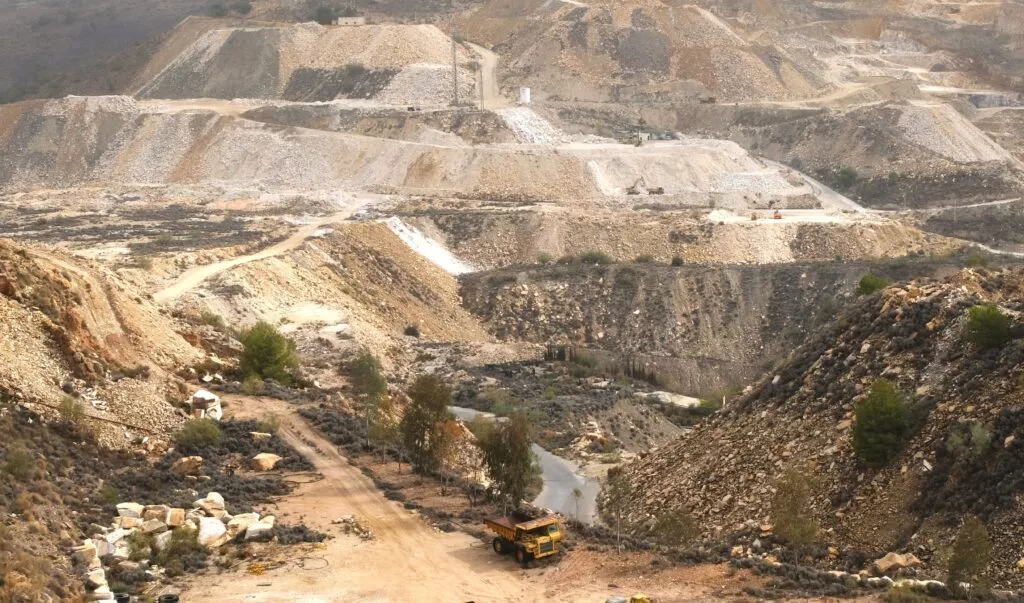
From this viewpoint in Consentino, you can watch the marble extraction process, and it’s truly impressive.
Las Canteras viewpoint
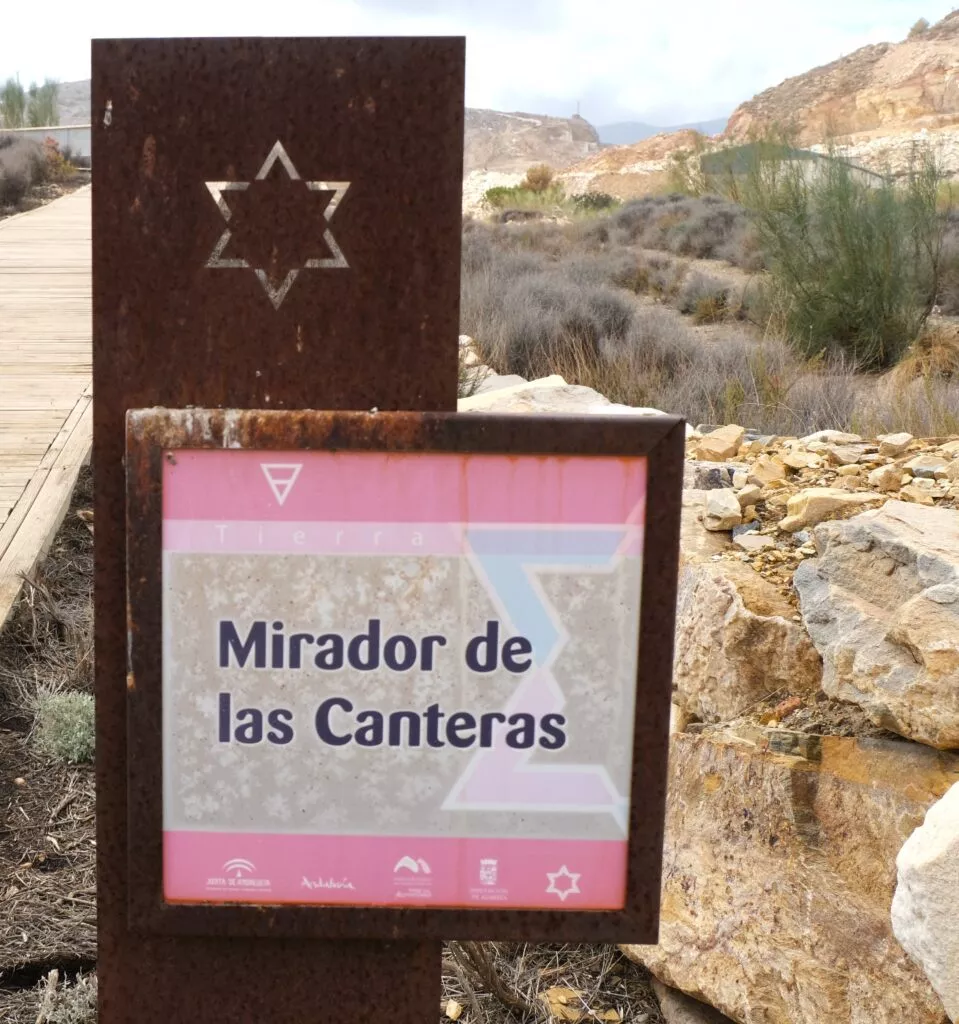
This viewpoint, located not far from the previous one, gives you a good idea of the size of this incredible deposit. It’s easy to get there by car using Waze or another app.
Paseo Reino de Granada, a must-see boulevard in Macael
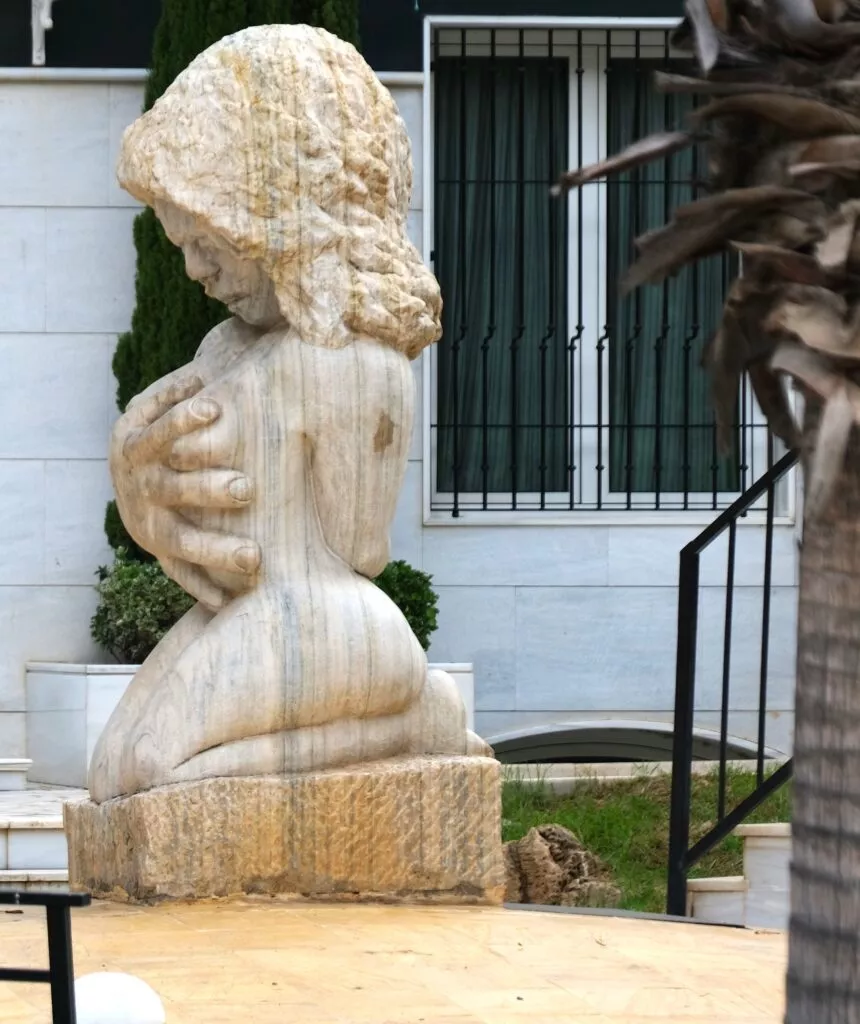
This boulevard is a real stroll through a large number of marble sculptures. It is also known as Avenida Paco Consentino.
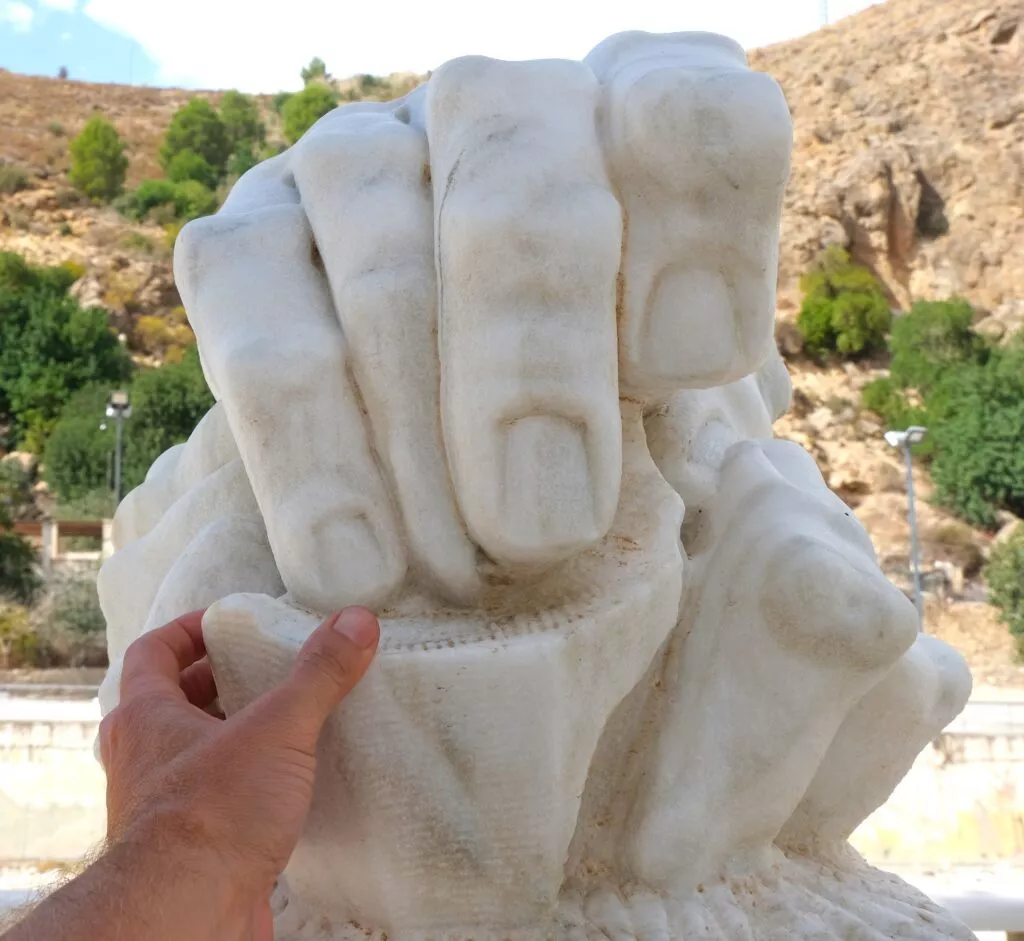
Marble interpretation centre
This museum – marble interpretation centre is designed as a cultural space where history, tradition and innovation coexist harmoniously to offer us a vision of the marble culture in Macael. The space thus created helps to contextualise this marble culture and contributes to making the visit more attractive and experiential.
It is located at 50, rue Garcia Lorca.
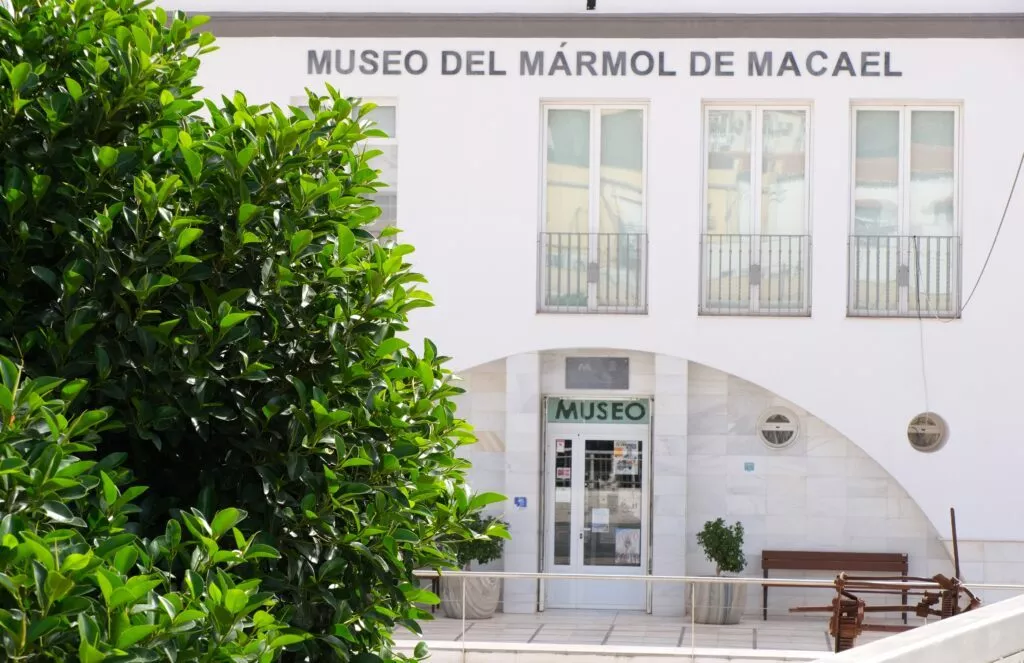
The monument to the stonemason – Monumento al cantero –
The Monumento al cantero (Monument to the Stonecutter) is a commemorative sculpture carved on a white marble ‘mass’, proudly expressing the bust of a marble worker.
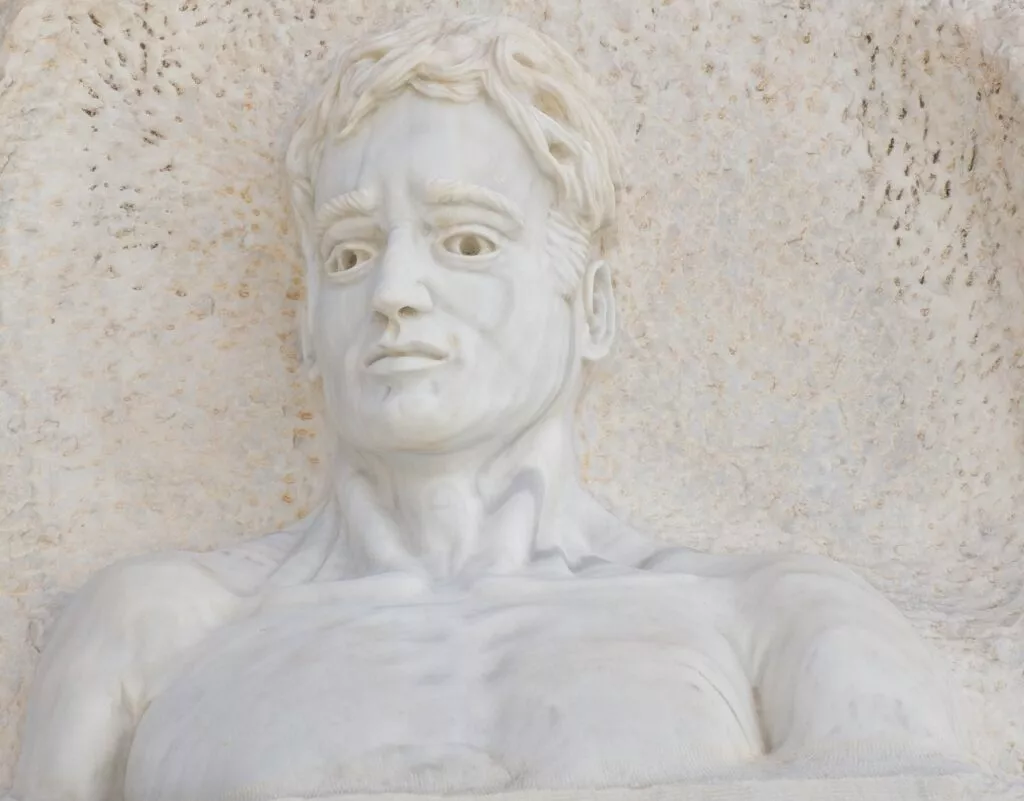
Engravings also depict various civilisations that have exploited marble.
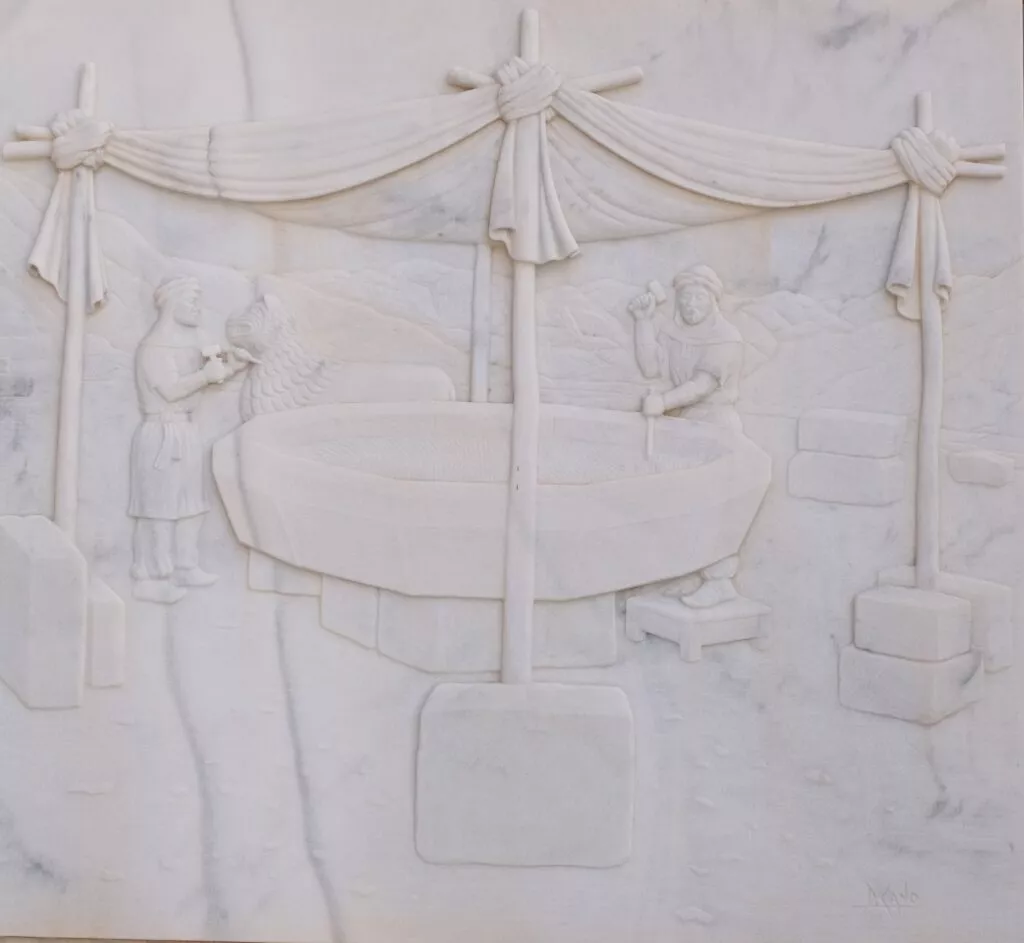
The museum is located at 86, rue Garcia Lorca.
Two other ideas for visits to Macael
Visit a craft or sculpture workshop where you can learn about the different processes involved in transforming and making marble, observing first-hand the work of a master craftsman.
You can also take a walk through the old quarries, a trail of around 5 km that recovers the old access road, visiting the historic quarries.
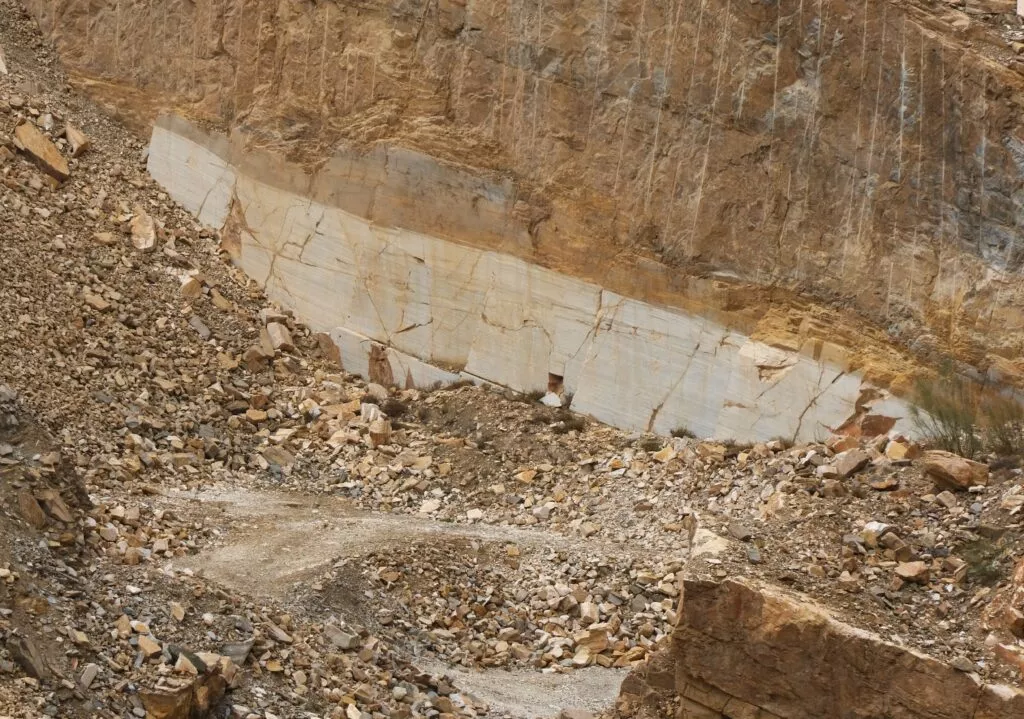
There is also an archaeological site located where the workers once settled. Excavations on the site have uncovered the ruins of a Roman villa and an ancient aljibe (water reservoir under Al-Andalus). This trail follows the old path on which marble blocks were once brought down from the quarries by oxen.
Here’s a link to the route of this walk: sendero del mármol.
The Virgen del Rosario viewpoint
This monument stands on a small summit. It is the Virgen del Rosario, a sculpture created by José Sabiote Fernández from the purest, whitest Macael marble. Here, Macael’s patron saint watches over the town’s inhabitants.
The main annual festivities in Macael
Feria de Macael in October
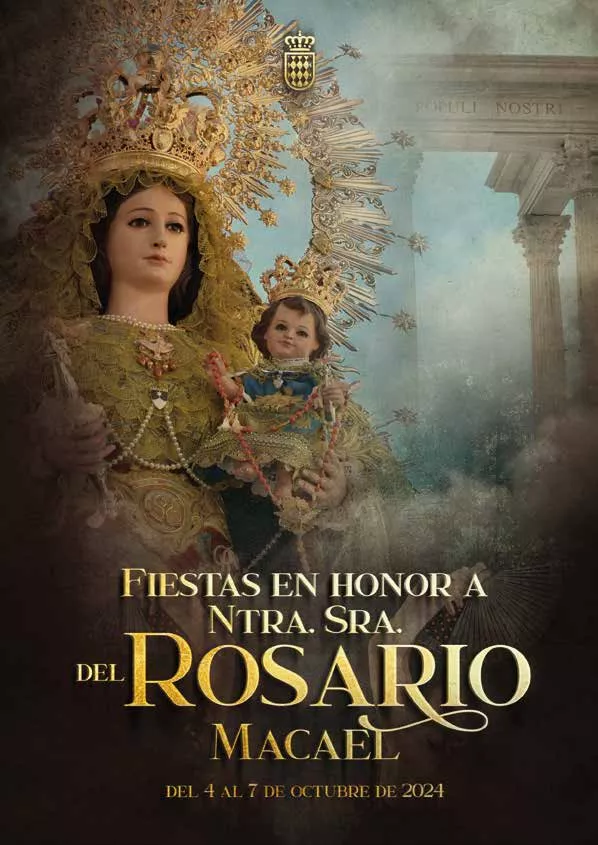
Fiesta de Canteros y Cacique in May – An incredible historical celebration
This celebration recounts a historic event: the struggle of the quarry workers against the Caciques for the Macael quarries to belong to the town. This rebellion – the Quarry Quarrel – marked the future of the town of Macael.
Note: Macael’s marble quarries have always been communal by inheritance since the Muslim period. In other words, for around 1,000 years they have never belonged to a private owner or to any seigneury.

In 1919, the local caciques tried to privatise the quarries, which led to an episode of intrigue, corruption and power struggles. During this period, the quarry workers and their families confronted the caciques to prevent privatisation.
The dispute was not resolved until 1947, when a ruling declared the Macael quarries to be public. This fact, which is unique in Spain, is an element of differentiation that determines the culture surrounding the extraction of Macael marble.
Note: This is a key factor in the development of the current commercial fabric, which has acted as a barrier to entry and prevented them falling into the hands of multinationals, as is the case with other Spanish mining operations.
And to round off this incredible festivity, here’s a video to immerse yourself in the 2024 atmosphere of Caciques y canteros :
Book accommodation in Macael
Below, you’ll find all the availability once you’ve selected your dates:
What to see and do around Macael
Olula del río
This small town 3 km from Macael offers visitors a stunning site: the casa museo Ibanez. This is a museum of contemporary art that is sure to surprise you. Admission is free, and there’s also a permanent exhibition by photographer Carlos Pérez Siquier… extraordinary.
Below, the sculpture in homage to Almanzora’s wife – La mujer del Almanzora – , all in marble, in front of the museum:
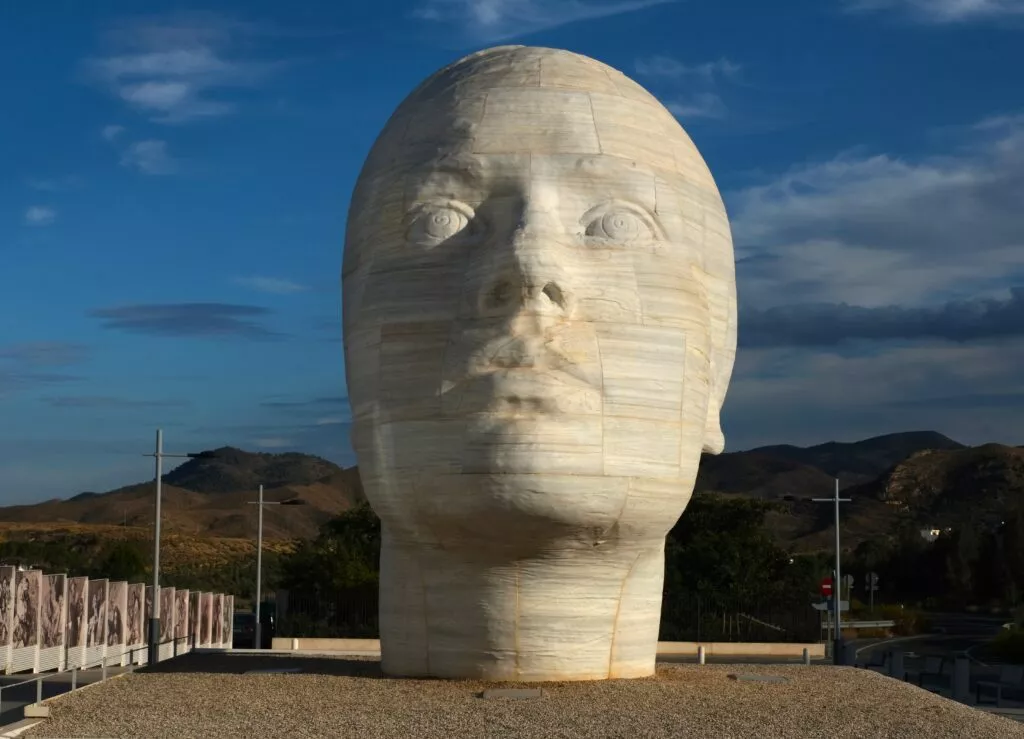
This marble sculpture weighs 250 tons…
To find out more, here’s a link to the incredible Olula del río museum (under construction).
Nijar
Nijar is a wonderful village in the province of Almeria. It is on the list of ‘Pueblos más bonitos de España’. Below is a photo of the countryside around Nijar:
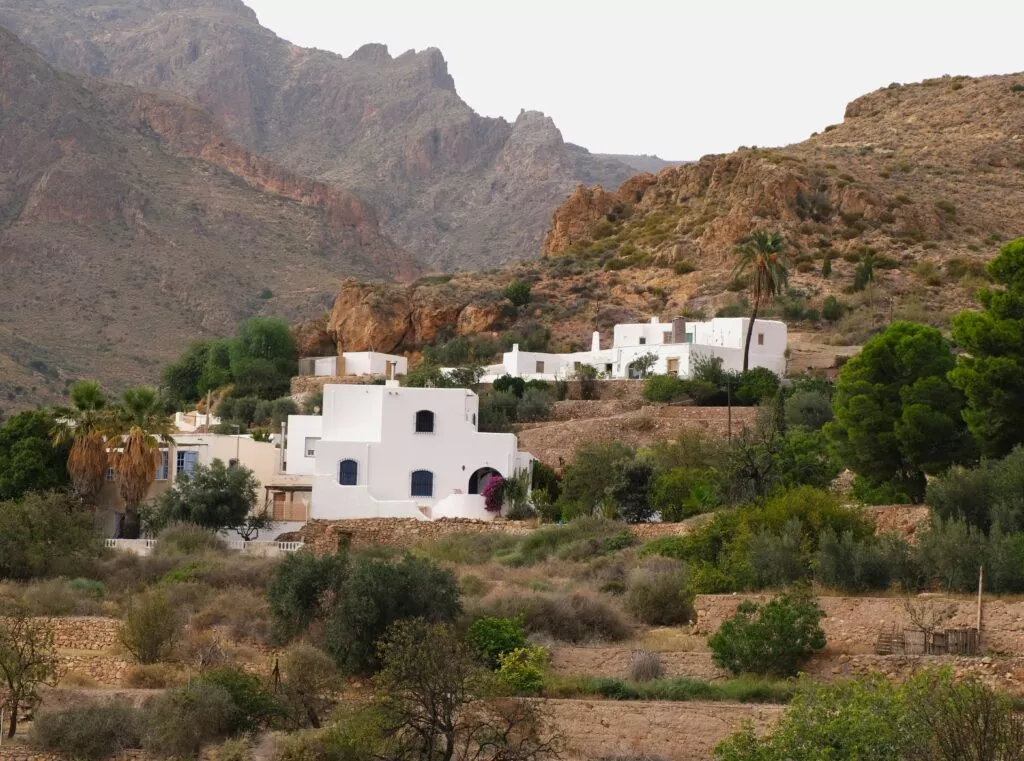
You’ll find some great things to see in Nijar (link under construction).
Lucainena de las Torres
Lucainena de las Torres is a delightful white village in the province of Almeria. Like Nijar, it also features on the list of ‘Pueblos más bonitos de España’.
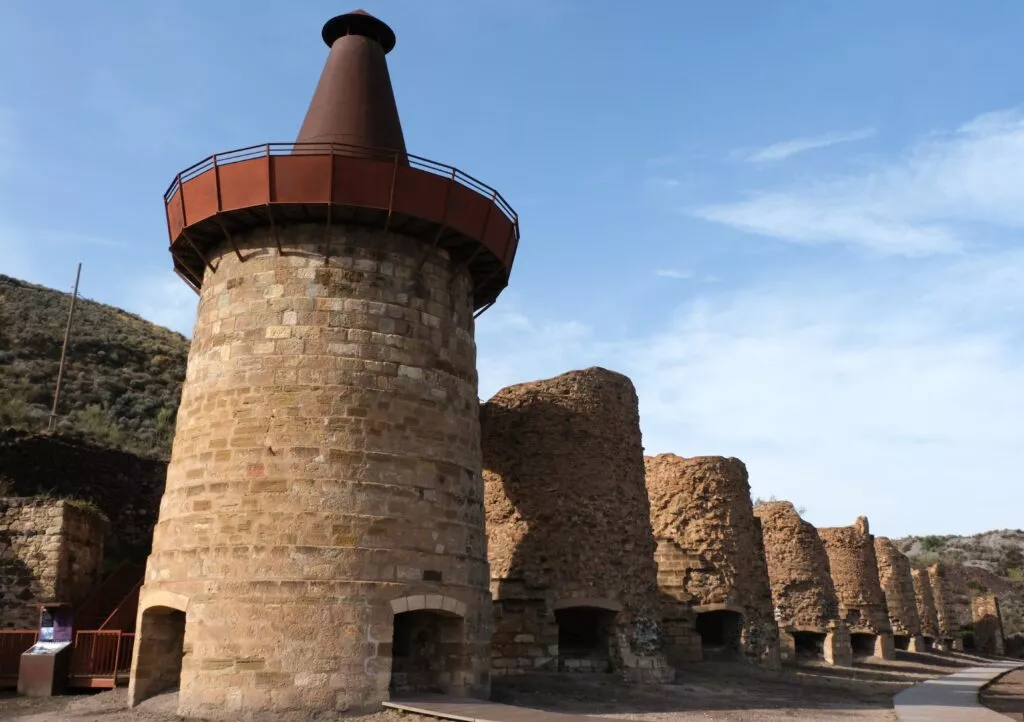
In Lucainena, there’s a very interesting industrial tourism site, the old ore calcination furnaces.
Where to eat in Macael
Here’s a great place to have lunch in Macael: restaurant la Marmita.
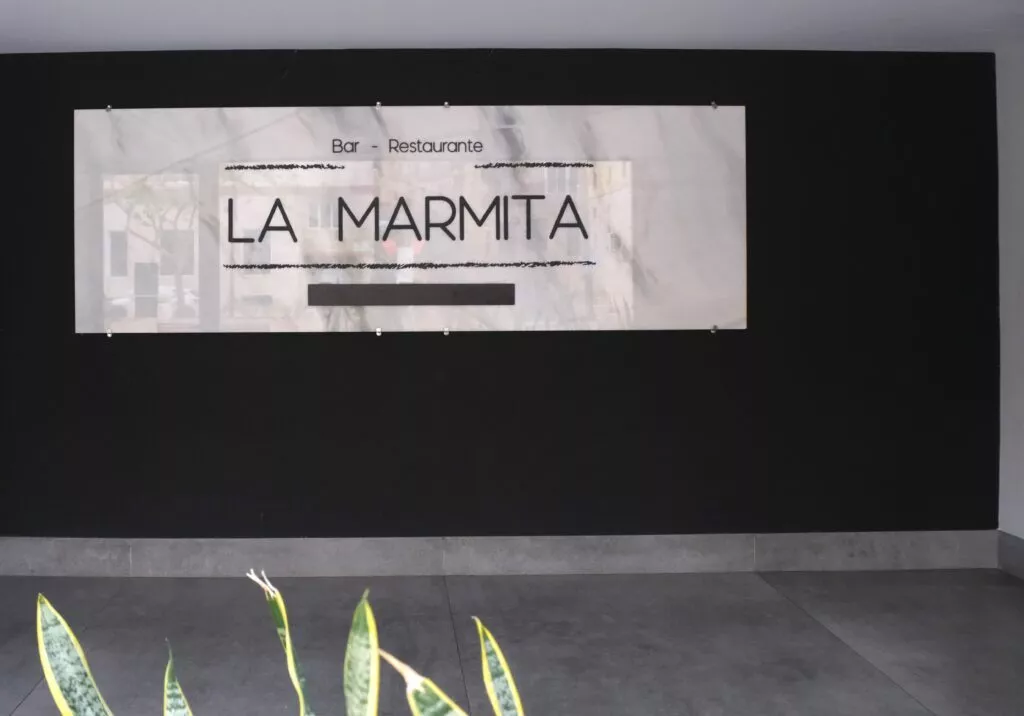
In this restaurant, you can even have lunch on plates made of ….marble. It costs between €30 and €40 per person, but it’s not every day you get to eat off marble plates.
For the record, there is a restaurant elsewhere in the world that serves a meal on white Macael marble plates.
It’s called Atmosphere. Aptly named, it is the highest restaurant in the world, at 442 metres above sea level. It is on the 122nd floor of the Burj Khalifa tower in Dubai. One last figure: the menu served on marble plates costs 1,500 euros per guest.
It was Macael’s craft company, Sabiote Innova, that came up with the process for making marble plates a few years ago. The restaurant at this 7-star hotel in Dubai was one of the first customers!
What to do in the province of Almeria
Below you’ll find the excursions and activities on offer in this magnificent province.
What’s more, you can book them online today (with free cancellation):
Some ideas and useful links
The links below can be very useful depending on where you are staying and what you need to do to have a wonderful time in Andalucia.
- An interactive map of Andalucia to find lots of ideas for visits around you, off the beaten track.
- link to book a rental car at Malaga airport.
- link to book a rental car anywhere else in Andalucia with the rentalcars platform.
- If you’re on the Costa del Sol and looking for ideas for excursions in Andalucia, you can use the following link to book a tour departing from Málaga, Torremolinos, Estepona or Benalmadena.
Discover more of Andalusia’s beautiful sites in the Andalucia blog pages.
Here is the link to receive our blog newsletter.
Here are the latest articles on Andalusia
-
Interactive map of Andalucia with best places to see
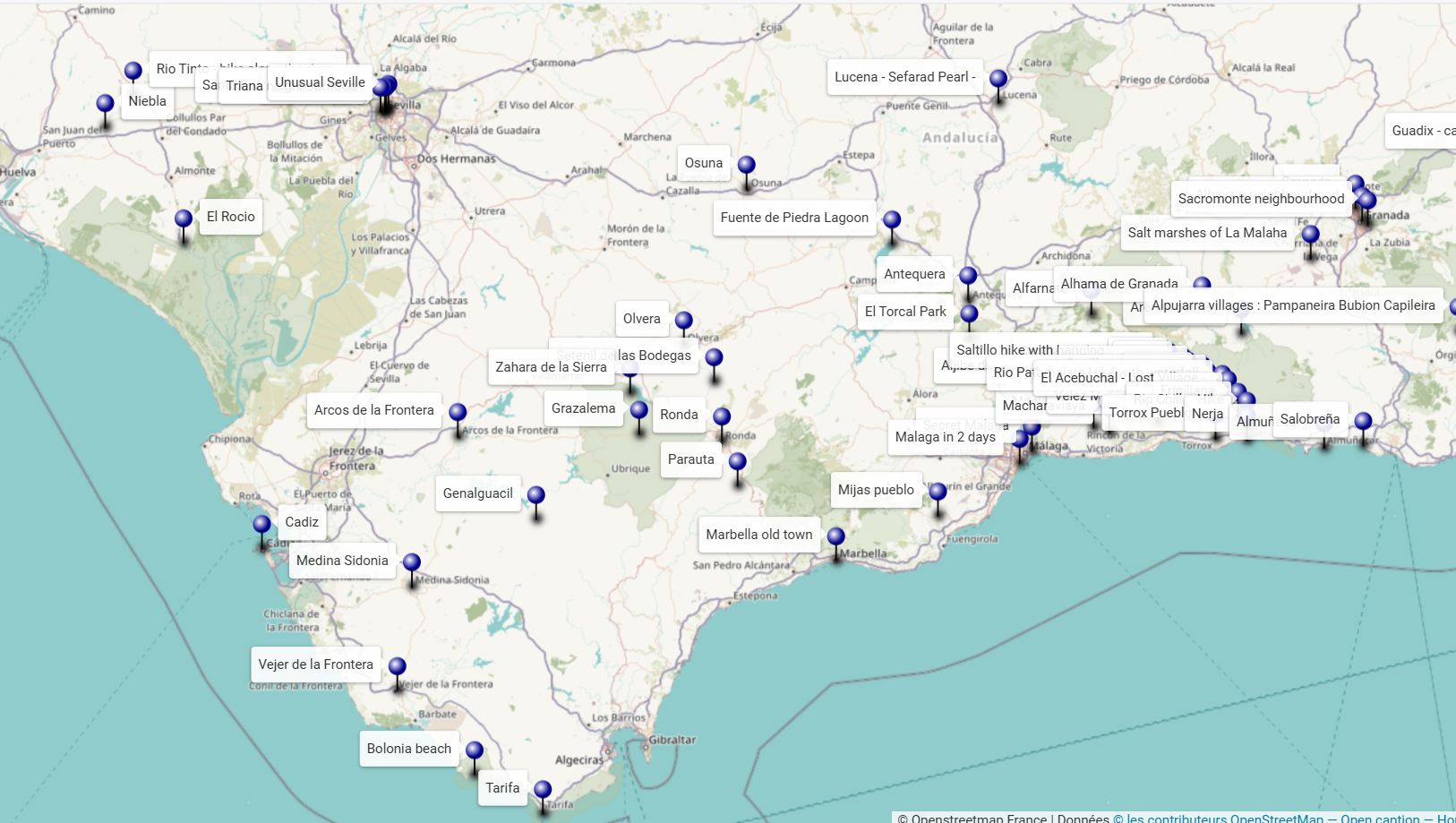
An interactive map of Andalucia to discover the sites to see around your holiday destination or to prepare a tour or road-trip.
-
What to see in Parauta and its enchanted forest ?
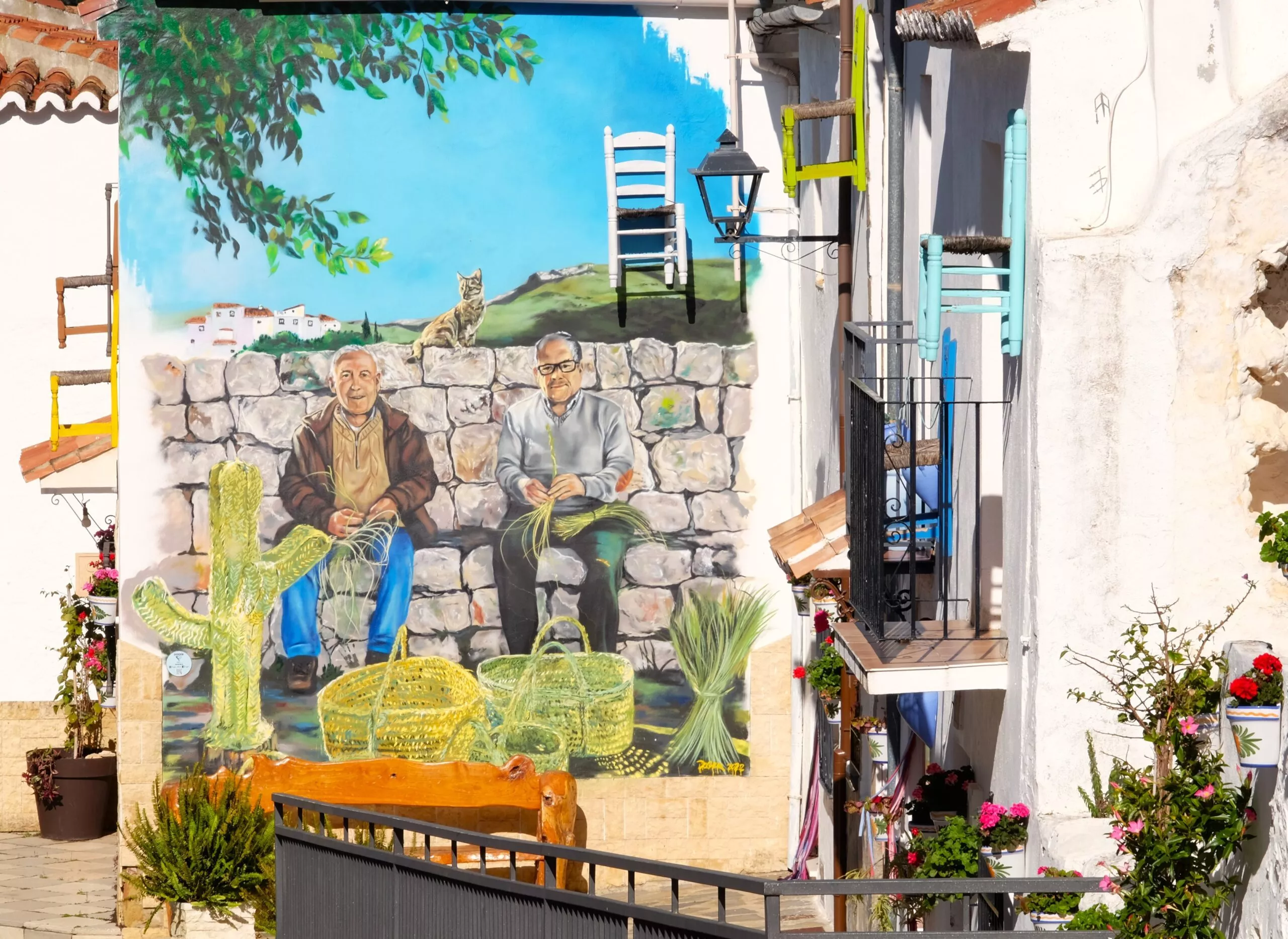
All the essential things to see in the wonderful village of Parauta and also in its very curious enchanted forest, el bosque encantado.
-
What to see in Genalguacil in the Vizier’s beautiful gardens
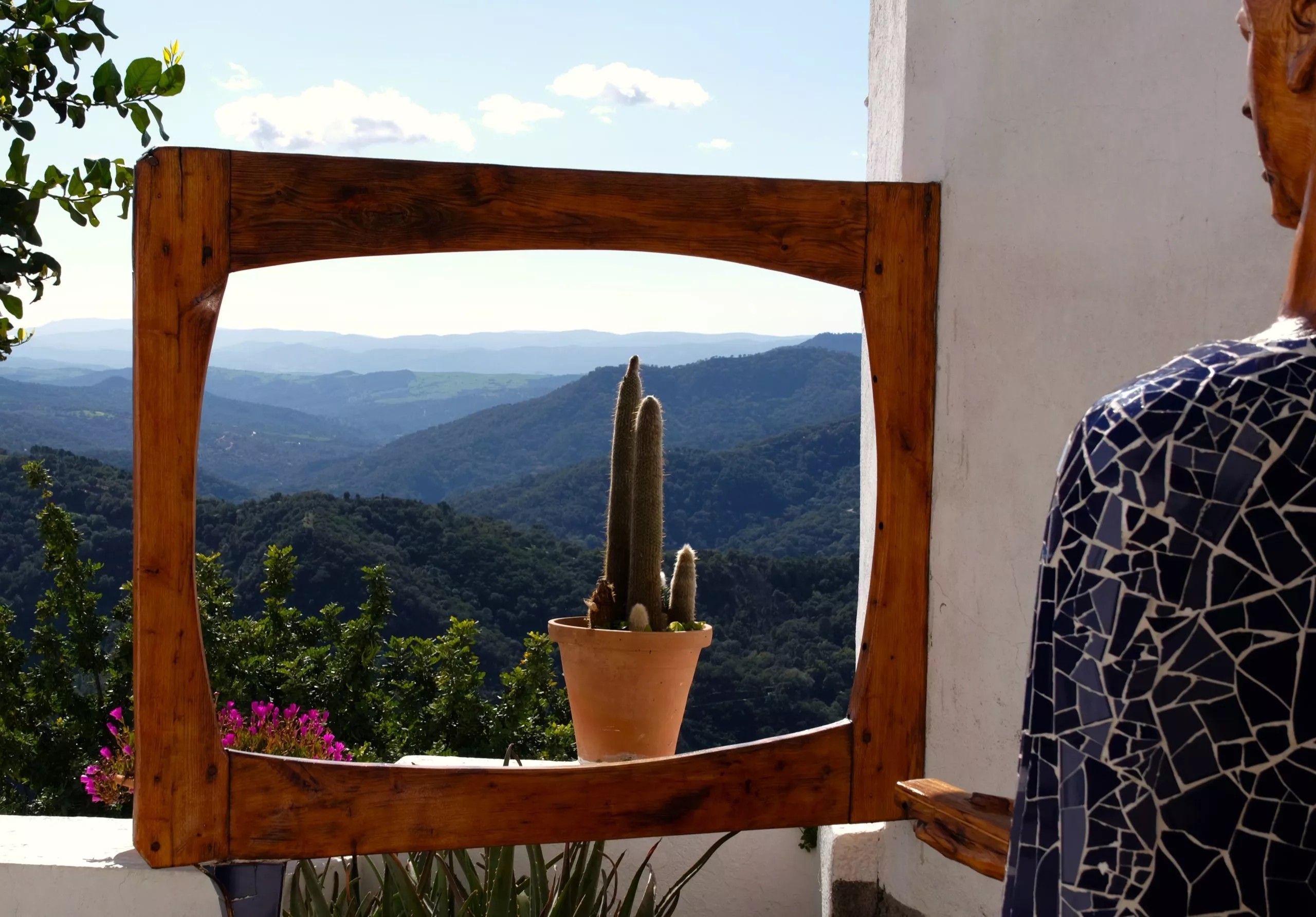
Here are all the essentials about what to see in the incredible village-museum of Genalguacil. A curious journey is waiting for you.
